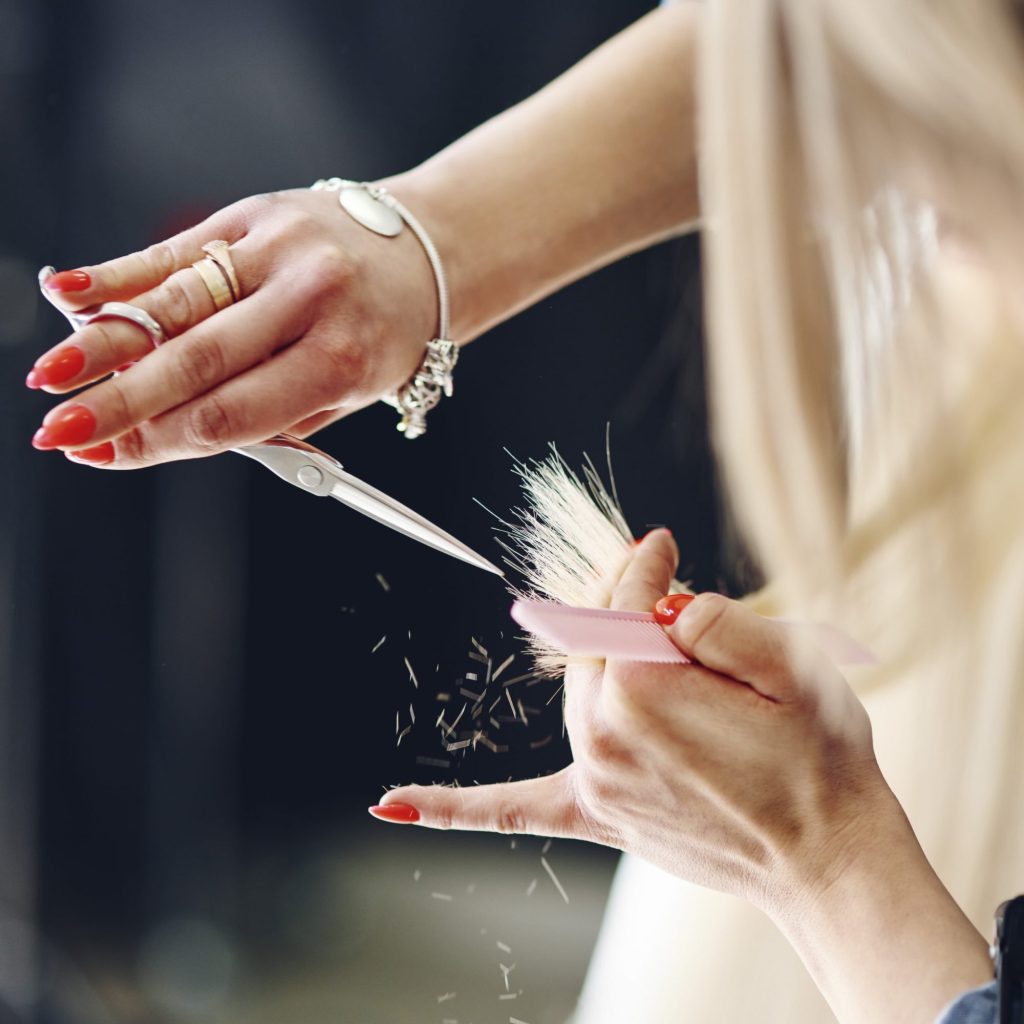There’s a lot of terminology that gets thrown around the hair salon that you may or may not be familiar with: balayage, ombré, curtain bangs, highlights versus lowlights, shadow roots, shag cuts – the list goes on and on. We could write a whole book on hair terms and salon lingo (although one probably already exists) but for now, we’ll focus on spreading the word on a lesser known method of styling: a dry haircut.
We all know how the standard process goes: wash, cut, dry, style. But did you know that isn’t the only order of how a haircut can go down? A dry haircut switches things up by washing and drying your hair before going in for the cut. There are actually a host of reasons why your stylist might suggest opting for a dry cut, especially if you have thick or curly hair. For one, it allows your stylist to work with your hair in its natural state and the way in which you wear it most often, which makes getting your hair to look exactly how you want it once you’re back at home and on your own a breeze. Also, there are certain cuts that some stylists prefer to only do dry, like ghost layers, for example.
Curious about whether a dry cut might be a fit for you? Ahead, Erica Conan, director of education for ColorProof breaks down everything you should know about a dry cut and who can benefit from one.
What is a Dry Haircut?
A dry haircut is exactly what it sounds like: cutting the hair while dry, as opposed to the traditional method of cutting it while it’s wet. There are a couple of reasons for this.
“Dry cutting is often used for the detail work of a finished haircut that was cut using the wet technique,” Conan tells POPSUGAR. “Dry cutting is great for providing additional texturizing and fine-tuning post-blowout when the actual shape and fall pattern are visible.” When preformed with a razor, it can give your hair a soft finish on the ends.
Certain hairstyles and types lend themselves to a dry cut as well, because the technique allows the stylist to see the natural movement and shape of the hair. “This is especially important if you have a natural curl texture or added color dimension,” Conan says. “Some stylists prefer to complete the full haircut in this technique, especially on thicker or curly textures.”

